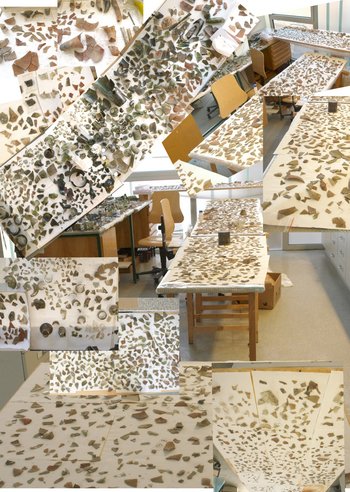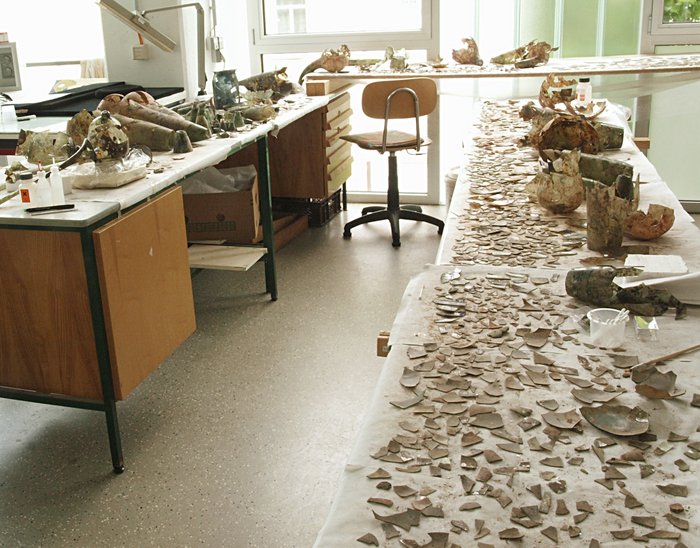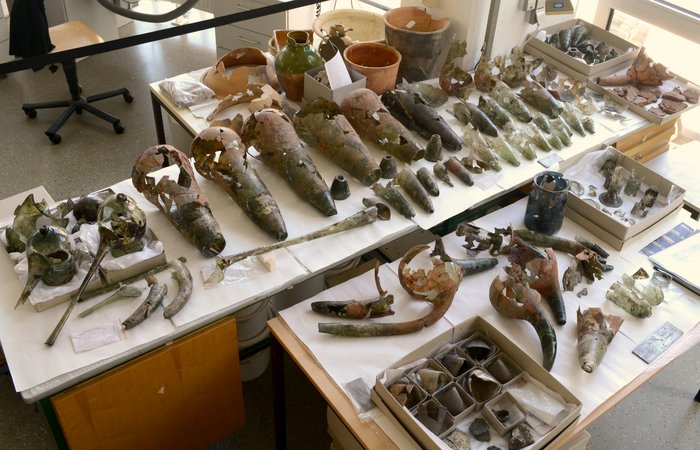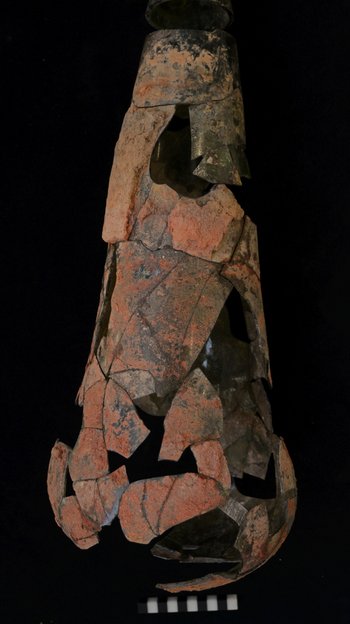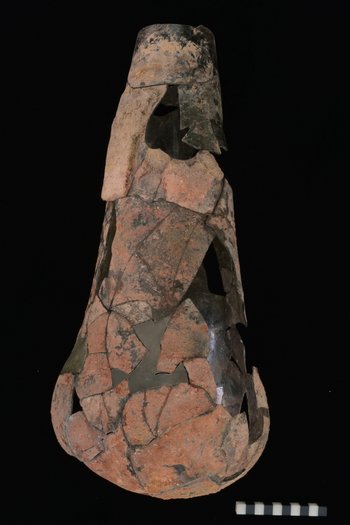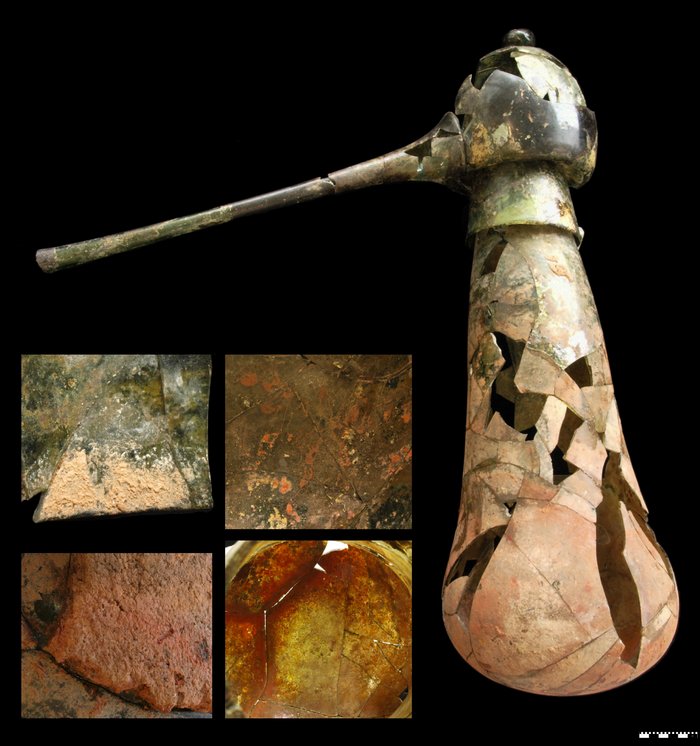An alchemist's workshop from Wittenberg
In 2012 an unusually extensive trove of glass was recovered from the Franciscan monastery in Wittenberg: Six large crates filled with glass sherds were sent directly from the excavation to the restoration workshop of the State Museum of Prehistory in Halle. After the sherds were laid out, they covered an area of about 20 square metres. As is generally the case with the conservation of archaeological finds, the first steps were to examine and document the objects. Hereby the condition of the objects is recorded and already recognisable traces such as deposits or traces of manufacture are recorded or sampled. The director of the archaeological excavation in the Franciscan monastery had already recognised the adhesions on the glass surface to be a special feature of the Wittenberg glass finds. Samples of these adhesions were analysed at the State Office of Criminal Investigations in Magdeburg. The result was electrifying: Among other things, substances typical of alchemy such as antimony and mercury were detected. It was thus clear that the thousands of glass fragments were the remains of an early modern alchemist's workshop. This was also confirmed by the further restoration of the glass sherds, which could be assembled into the inventory of an alchemist's workshop.
Since the find consisted of a large quantity of intermixed sherds from different vessels, the fragments first had to be pre-sorted and grouped. Subsequently, the glassware was glued together in a direct build-up gluing process, i.e. as soon as a matching sherd was found, it was immediately attached with an exact fit. After about a year of work, the extent of the alchemist's workshop finally became clear. By assembling the sherds, a multitude of distillation alembics, huge cucurbits, and retorts were recreated over time.
After the fragmentary glass vessels had initially been largely glued together, it became apparent that some vessels were too unstable to support their own weight. Supporting measures therefore had to be resorted to in their further assembly. The example shown here is the reassembly of a cucurbit. Its basal part was first reinforced with an acrylic glass rod. Then acrylic resin plates were fitted into the basal part. Finally, with the help of retouching, the appearance is unified and in this way the base area optically restored.
Reassembling the vessels also led to further insights into their use. Adherences on both the interior and exterior now revealed a uniform picture and not only provided information about the intended use, but also told the respective history of each object. As an example, a cucurbit with attached alembic is shown here. The contact point between alembic and cucurbit was sealed with clay slurry. To protect the glass, the belly of the flask was packed with coarse clay before heating. Inside the cucurbit, red drop-shaped traces of use could be observed from liquids trickling down. In addition, there are deposits on the inside of the vessel, in this case particularly intense red discolourations on the bottom, which continued to burn into the sherd edges after the vessel was broken.
Comprehensive information and further exciting details about the Wittenberg alchemist's workshop were presented directly after their restoration and scientific evaluation as part of the special exhibition ›Alchemy - The Quest for the Secret of the World‹ from 25 November 2016 to 5 June 2017 at the State Museum of Prehistory. An accompanying booklet with the same title was published on the occasion of the exhibition, as well as the volume ›Alchemie und Wissenschaft des 16. Jahrhunderts. Fallstudien aus Wittenberg und vergleichbare Funde‹ (Alchemy and 16th Century Science. Case studies from Wittenberg and comparable finds). The book contains the results of an international conference held in the run-up to the exhibition at the State Museum of Prehistory and combines contributions on the excavation, restoration, and study of the Wittenberg alchemy finds with such dealing with the context of the humanities and medical history, as well as aspects of alchemical practice and lore, and comparative finds in the German-speaking world. Both volumes are available in the museum’s shop of the State Museum of Prehistory, from the publishers Verlag Beier & Beran, as well as in bookshops, and even after the exhibition has ended enable anyone interested to delve deeper into this exceptional archaeological find.
A further insight into the alchemists' workshop is provided by the film accompanying the special exhibition ›Alchemy. The Quest for the Secret of the World‹ (German version only).
